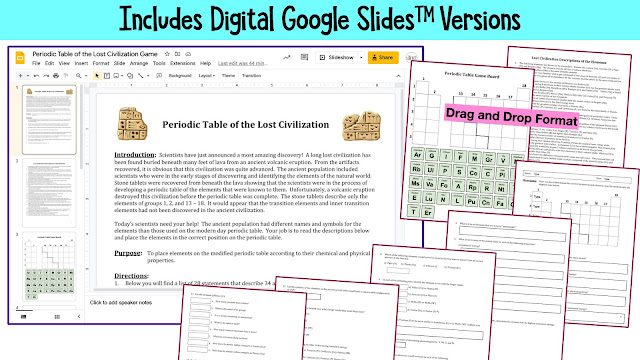Celebrate the Wild Side of Science with this “Mother Nature Awards” activity! 🌍🏆
Looking for a new way to wrap up the school year or kick it off in style? Say hello to the Mother Nature Awards— an exciting, low-prep activity that gets students researching, thinking critically, and most importantly… saying “COOL!” in your classroom!
Each year, I challenge my students to create their own Planet Earth Award for a unique and very deserving living organism. Whether it’s the most bizarre plant or the most hardcore survivalist animal, this activity highlights some of nature’s most fascinating lifeforms. Students dig into research, build a PowerPoint slide or poster, and then present their awards to the class. Trust me — the competition gets fierce to see who can come up with the most bizarre organism in nature.
To make this even more fun, I created my own set of Mother Nature Awards. It's a ready-to-go collection of 20 PowerPoint slides/PDF's that highlight some of the weirdest, wildest, and most wonderful organisms on Earth. These award-winners have unique traits that make students stop and say, “Is that really true?” You can use my set of awards as examples to the students, or print them to create an amazing bulletin board or wall display.
How You Can Use the Mother Nature Awards in Your Classroom:
Kick off the school year with a WOW!
These slides are a perfect icebreaker and a creative way to introduce life science. Students are instantly intrigued, and you’ll have them hooked from day one.Fill in those awkward time gaps.
Got 5 minutes before the bell? Pop up a Mother Nature Award and give your students a quick, curious look at the natural world.Create a bulletin board that actually gets attention.
I print, laminate, and display each award after we view it in class. They brighten up the room — and my students can’t stop reading them.Assign a student-created version for a grade or extra credit as an end of the year activity.
This resource includes a 2-page student worksheet (with two versions!) to guide your students through their own Planet Earth Award research. Whether you prefer a PowerPoint slide or a colorful poster project, this activity is adaptable and engaging.Easy grading with a customizable rubric.
You’ll also get an editable grading rubric to simplify assessment and tailor it to your teaching needs.
This activity isn’t just fun — it’s educational and flexible. Whether you’re closing out the year with a bang or jumpstarting science engagement at the beginning of the year, the Mother Nature Awards are a hit every time.
Check it out here:
👉 Science Activity: Awards for Amazing Plants and Animals + Worksheets
Let your students celebrate Earth’s most incredible living things — and unleash their creativity at the same time!




























